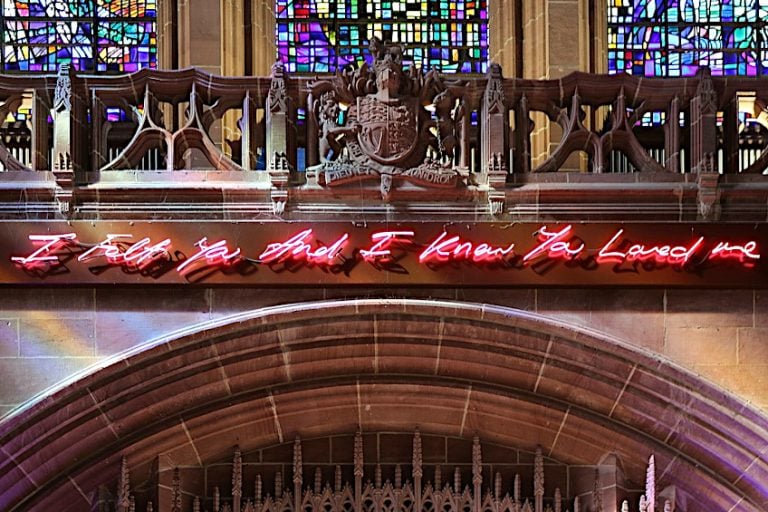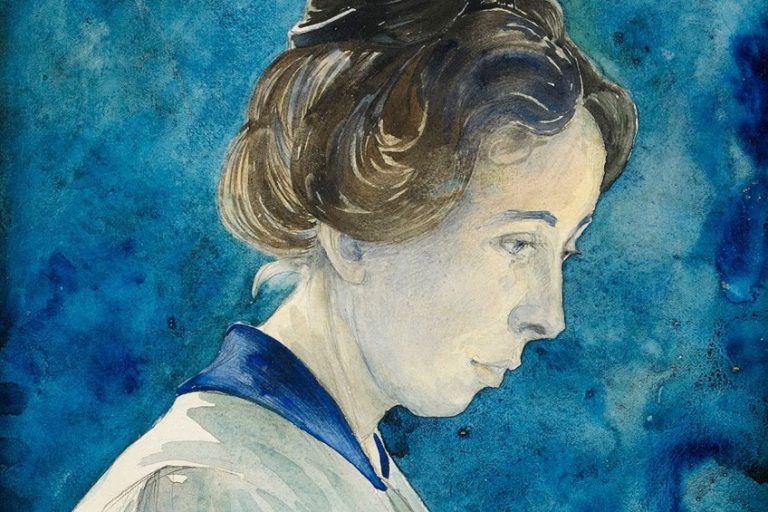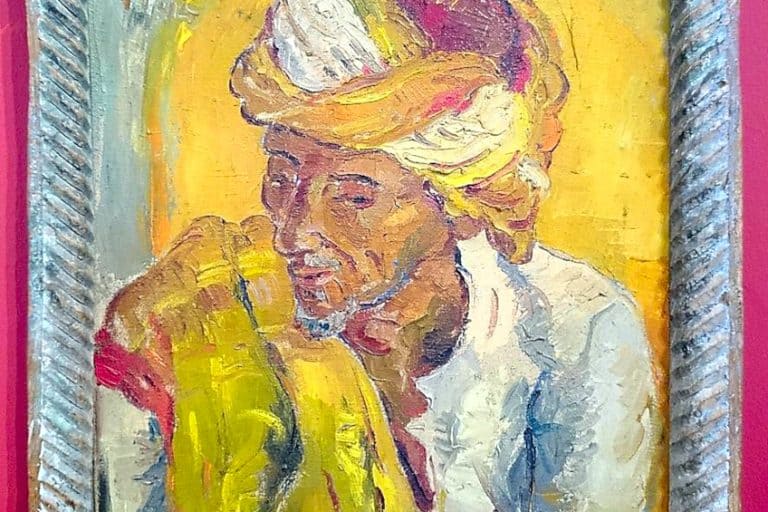Ronald Ventura – Introducing the Captivating Filipino Artist
Discover the captivating world of Ronald Ventura, a prominent Filipino contemporary artist whose breathtaking artworks transcend boundaries and redefine artistic expression. In this article, we delve into the realm of Ronald Ventura’s biography, exploring both his remarkable creativity and the awe-inspiring masterpieces that have garnered him international acclaim. From his early life to the present, we unravel the inspirations and influences that have shaped Ventura’s artistic journey, providing an in-depth glimpse into the mind of this visionary creator. Join us as we unveil the profound beauty and complexity that define Ronald Ventura’s artistic legacy.
Ronald Ventura’s Biography
| Date of Birth | 1973 |
| Age | 50 years old |
| Place of Birth | Manila, Philippines |
| Nationality | Filipinos |
| Associated Art Movements | Realism, cartoons, and graffiti |
Ronald Ventura’s contributions to the art world have been nothing short of revolutionary, propelling him to the forefront of the Filipino contemporary art movement. Through his mastery of various styles and genres, he continues to captivate audiences worldwide, leaving an enduring legacy that will undoubtedly shape the course of art history for generations to come.
Childhood
Ronald Ventura was born in 1973, in Manila, Philippines. Growing up in a country rich in cultural diversity and artistic heritage, Ventura’s interest in the arts was kindled at a young age. During his formative years, he was exposed to a myriad of artistic expressions, from traditional Filipino crafts to contemporary art forms. This early exposure laid the foundation for his creative journey, igniting a passion that would shape his artistic endeavors in the years to come.
Influences
Throughout his life, Ventura drew inspiration from an eclectic range of sources. His love for comic books and graphic novels infused his art with elements of narrative and symbolism, while classical and Renaissance art exposed him to techniques that he would later blend with contemporary aesthetics. Additionally, Ventura was influenced by the socio-political landscape of the Philippines, addressing issues like identity, consumerism, and the human condition in his artworks.
These diverse influences coalesced to form his distinctive artistic style, making him stand out as a unique voice in the Filipino contemporary art scene.
Training and Early Artworks
Ventura pursued his formal art education at the University of Santo Tomas College of Fine Arts and Design in Manila. During this period, he honed his technical skills and experimented with various mediums, such as painting, drawing, and sculpture. His early artworks already showcased a fusion of realism and imagination, with intricate details and haunting imagery. This experimental phase laid the groundwork for his future exploration of the boundaries between realism and surrealism, creating a sense of disquieting beauty in his art.
Major Career Achievements
In the early 2000s, Ronald Ventura’s career began to gain significant traction both in the Philippines and internationally. His exhibitions received critical acclaim, leading to numerous prestigious awards and recognitions. Ventura’s artworks started commanding the attention of art collectors, and he became one of the most sought-after contemporary artists in Southeast Asia. His international breakthrough came with exhibitions in prominent art centers across the world, propelling his art to the global stage.
Influence on Realism, Cartoons, and Graffiti
Ventura’s artistic journey has left an indelible mark on various aspects of art history. His meticulous blend of realism and fantastical elements has redefined contemporary realism, inspiring a new generation of artists to experiment with juxtaposing the familiar with the surreal. Furthermore, his integration of cartoon-like characters in his works has added a unique dimension to the contemporary art landscape, bridging the gap between high and low art.

Ronald Ventura’s Art: A Reflection of the Philippines’ Socio-Political Climate and Artistic Evolution
The art of Ronald Ventura stands as a captivating tapestry woven from the threads of his personal experiences, the socio-political landscape of the Philippines, and his ever-evolving artistic journey. With a unique blend of realism, surrealism, and symbolic imagery, Ventura’s works transcend the canvas, speaking volumes about the complexities of his nation’s history, identity, and social issues.
In this section of the article, we delve into the context surrounding Ronald Ventura’s art, exploring its intimate connection with the socio-political climate of the Philippines in which it was created, as well as tracing its evolution throughout his illustrious career.
A Nation’s Narrative on Canvas
Ventura’s art serves as a poignant narrative of the Philippines’ tumultuous history and diverse cultural tapestry. Born in the early 1970s, he witnessed the country’s transition from a period of martial law under Ferdinand Marcos to the post-Marcos era marked by struggles for democracy and social justice. This backdrop of political upheaval and socioeconomic disparities deeply influenced Ventura’s perspective, motivating him to explore themes of identity, power, and resilience in his artworks.
The Impact of Social Issues
In the face of rapid urbanization and globalization, the Philippines grappled with pressing social issues, such as poverty, consumerism, and environmental degradation. Ventura’s art became a platform for expressing his concern and critique of these challenges. Through his intricate and visually arresting compositions, he confronted viewers with the harsh realities faced by marginalized communities and the ecological consequences of unchecked progress. His paintings and sculptures often serve as mirrors reflecting the collective struggles and aspirations of the Filipino people.
A Journey of Artistic Evolution
Throughout his career, Ventura’s art underwent a remarkable evolution, mirroring the shifting tides of the Philippine art scene. In his early years as an artist, he experimented with various styles, drawing inspiration from pop culture, comic books, and graffiti. However, as he delved deeper into his cultural roots and engaged with socio-political themes, his art evolved to encompass a profound fusion of traditional Filipino motifs and contemporary aesthetics. Ventura’s masterful handling of realism and surrealism became a hallmark of his art, compelling viewers to confront the intricacies of the human psyche and society at large.
Cultural Identity and Global Relevance
One of the most striking aspects of Ventura’s art lies in its ability to encapsulate the complexities of Filipino cultural identity while resonating with audiences on a global scale. Through his intricate use of symbolism and cultural references, he unites the local and the universal, bridging the gap between the Philippines and the world.
As his art gained international recognition, Ventura became an ambassador of Filipino contemporary art, contributing to the growing visibility and appreciation of Southeast Asian artists on the global stage.
Provoking Thought and Dialogue
At its core, Ronald Ventura’s art is more than just visually stunning; it serves as a catalyst for dialogue and introspection. By addressing pertinent socio-political issues, he urges viewers to confront uncomfortable truths and engage in critical conversations about society, justice, and human nature. Ventura’s art challenges the status quo and encourages a deeper understanding of the world around us, making it a potent force for social change and reflection.
Ronald Ventura Artworks’ Technical Characteristics
Ronald Ventura’s art is a mesmerizing amalgamation of technical mastery and artistic innovation. One of the most striking characteristics of his works lies in the intricate attention to detail, evident in every stroke and element on the canvas. Ventura’s command over various artistic techniques allows him to seamlessly integrate realism with surrealism, resulting in visually captivating compositions that challenge perceptions and provoke contemplation.
His skillful use of chiaroscuro and shading creates a sense of depth and dimension, lending an almost sculptural quality to his paintings. Moreover, his works often feature a rich and complex layering of symbols, cultural references, and allegorical elements, inviting viewers into a world of intricate storytelling. Whether through oil painting, drawing, or sculpting, Ronald Ventura’s art captivates audiences with its technical brilliance, pushing the boundaries of contemporary art and leaving an indelible mark on the artistic landscape.
Ronald Ventura’s Artworks: Visual and Conceptual Analysis of Hunter (2015)
| Title | Hunter |
| Date | 2015 |
| Medium | Mixed media and oil on canvas |
| Dimensions (cm) | 213 x 152 |
| Art Movement | Contemporary art |
| Location | N/A |
Hunter (2015) by Ronald Ventura is a striking and enigmatic artwork that immediately captures the viewer’s attention. The large-scale mixed-media painting showcases Ventura’s signature style of intricate and meticulous detailing. The canvas is dominated by a central figure, a half-human, half-animal creature that stands with a powerful and imposing presence pointing a gun at the viewer of the artwork.
The creature’s muscular human torso is adorned with intricate images and artistic elements that almost form armor, hinting at both vulnerability and strength. Its skull head and animalistic features, including burning horses on its hat and a licking tongue, lend an air of ferocity and primal energy to the composition.
Ventura’s command over the interplay of light and shadow is evident in Hunter. The figures on the body form and layers of the image cast deep shadows, accentuating its three-dimensional quality and creating a sense of depth in the artwork.
Conceptual Analysis
Hunter delves into themes that resonate with Ronald Ventura’s broader artistic exploration of identity, power, and the complexities of human nature. The hybrid creature at the center of the painting serves as a metaphorical representation of the primal and instinctual aspects of humanity. It embodies the dual nature of humans, depicting the struggle between our civilized, rational selves and the raw, violent instincts that lie beneath the surface.
The title, Hunter, further deepens the conceptual layer of the artwork. It evokes notions of predation, survival, and the eternal struggle for dominance in both the natural world and human society. Ventura’s creature stands as a formidable hunter, symbolizing the pursuit of desires, ambitions, and conquests that define the human condition.
Additionally, the complex interplay of patterns and symbolism in the artwork suggests a reflection on the intricacies of cultural and historical influences that shape our identities. Ventura weaves together a tapestry of references, from traditional Filipino motifs to contemporary symbols, raising questions about the intermingling of heritage and modernity in the context of a rapidly globalizing world.
Overall, Hunter presents viewers with a visual and conceptual feast that prompts introspection and invites interpretation. It challenges our perceptions of self and society, encouraging us to confront our primal instincts and ponder the dynamic forces that drive human behavior. Through his masterful execution and thought-provoking symbolism, Ronald Ventura’s Hunter stands as a captivating and profound exploration of the complexities of the human psyche and the timeless struggle for self-discovery.
In conclusion, Ronald Ventura’s biography as a Filipino contemporary artist unveils a captivating narrative that intertwines his intricate artworks, a remarkable artistic journey, and profound impact on the art world. From his early inspirations to the evolution of his signature style, Ronald Ventura’s artworks serve as a testament to the profound influence of his socio-political context on his art. As one of the most celebrated contemporary artists in Southeast Asia, Ronald Ventura’s contributions to the global art scene have been nothing short of extraordinary, solidifying his place as a visionary artist whose works continue to leave an indelible mark on the world’s artistic landscape.
Frequently Asked Questions
What Is Ronald Ventura Known For?
Ronald Ventura is known for his exceptional and innovative artistry as a Filipino contemporary artist. He is renowned for his skillful combination of realism and surrealism, which creates visually apprehending and thought-provoking pieces. Ventura’s artworks often feature elaborate detailing, potent symbolism, and a tantalizing investigation of the complexities of human nature and cultural identity. Through his unique blend of traditional Filipino motifs with contemporary aesthetics, he has carved a distinctive niche in the art world, captivating audiences both in the Philippines and internationally. Ventura’s artistic brilliance and profound narratives have cemented his status as one of the most influential and celebrated artists of his generation.
What Is Ronald Ventura’s Art Style?
Ronald Ventura’s art style is characterized by an extraordinary fusion of realism, surrealism, and symbolism. He is also known for his masterful use of various artistic techniques, such as oil paint, collage, drawing, and sculpture. He is known for his use of intricate patterns, and skillful manipulation of light and shadow, which brings unparalleled depth and richness to his artworks. Ventura’s paintings often feature haunting and enigmatic figures, blurring the lines between the human and the animal, the natural and the fantastical. Through this unique mixture of elements, he creates a sense of disquieting beauty that challenges viewers to delve into the complexities of the human psyche and society. Ventura’s art style is a powerful reflection of his exploration of identity, socio-political themes, and the timeless mysteries that lie beneath the surface of existence.
Nicolene Burger is a South African multi-media artist, working primarily in oil paint and performance art. She received her BA (Visual Arts) from Stellenbosch University in 2017. In 2018, Burger showed in Masan, South Korea as part of the Rhizome Artist Residency. She was selected to take part in the 2019 ICA Live Art Workshop, receiving training from art experts all around the world. In 2019 Burger opened her first solo exhibition of paintings titled, Painted Mantras, at GUS Gallery and facilitated a group collaboration project titled, Take Flight, selected to be part of Infecting the City Live Art Festival. At the moment, Nicolene is completing a practice-based master’s degree in Theatre and Performance at the University of Cape Town.
In 2020, Nicolene created a series of ZOOM performances with Lumkile Mzayiya called, Evoked?. These performances led her to create exclusive performances from her home in 2021 to accommodate the mid-pandemic audience. She also started focusing more on the sustainability of creative practices in the last 3 years and now offers creative coaching sessions to artists of all kinds. By sharing what she has learned from a 10-year practice, Burger hopes to relay more directly the sense of vulnerability with which she makes art and the core belief to her practice: Art is an immensely important and powerful bridge of communication that can offer understanding, healing and connection.
Nicolene writes our blog posts on art history with an emphasis on renowned artists and contemporary art. She also writes in the field of art industry. Her extensive artistic background and her studies in Fine and Studio Arts contribute to her expertise in the field.
Learn more about Nicolene Burger and the Art in Context Team.
Cite this Article
Nicolene, Burger, “Ronald Ventura – Introducing the Captivating Filipino Artist.” Art in Context. October 28, 2023. URL: https://artincontext.org/ronald-ventura/
Burger, N. (2023, 28 October). Ronald Ventura – Introducing the Captivating Filipino Artist. Art in Context. https://artincontext.org/ronald-ventura/
Burger, Nicolene. “Ronald Ventura – Introducing the Captivating Filipino Artist.” Art in Context, October 28, 2023. https://artincontext.org/ronald-ventura/.










